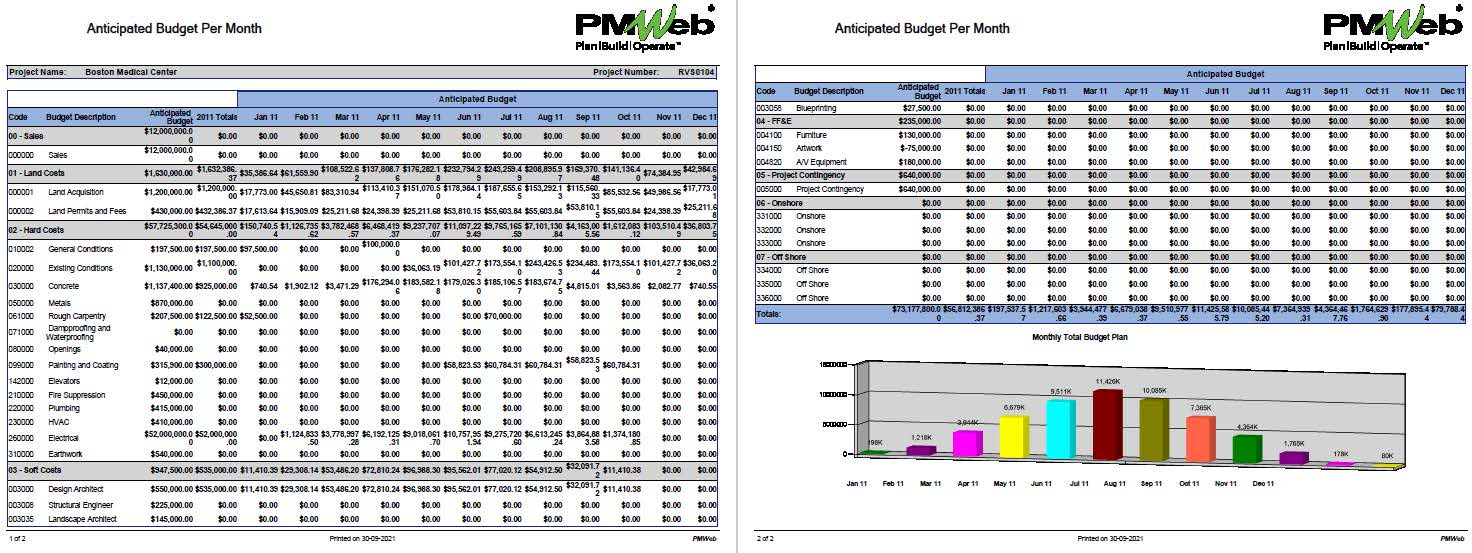One of the top great challenges that face project owners as well as contractors is how to convert their approved cost estimates into budgets that can be monitored, evaluated, and reported at the required cost breakdown structure (CBS) levels. For a project owner, there are different budget versions that derive from the approved cost estimate. Those include the budgets at the concept, schematic, design, and construction stages although only the latest version is set as the approved project budget.
Regardless of the tool or application used in quantifying the project’s scope of work and developing the project estimate, there is always cost items at which the cost estimate is established. As a minimum, each cost item includes a code, description, unit of measure, unit price, currency, quantity, and total price which is calculated by multiplying the unit price by the quantity. Of course, other details such as cost type (labor, material, equipment, subcontract, etc.), manufacturer name, project schedule activity, BIM object ID, WBS level, Bid Package ID, and other data fields can be also added to those cost items. Nevertheless, to enable converting a cost estimate into a budget that can be monitored, evaluated, and reported on, there is always the need to assign the cost breakdown structure (CBS) level associated with the cost estimate. Further, if the estimate was done by a contractor, then there is also the need to assign the Bill of Quantity (BoQ) or Schedule of Values (SoV) item number to each cost estimate line item. This helps to create the bid price or selling price to be quoted to the project owner.For an organization, the cost breakdown structure levels are usually standard across their complete projects’ portfolio as this becomes the basis not just for monitoring, evaluating, and reporting the project budget but also the basis for procuring and managing contract commitments and incurred actual cost against those commitments as well as non-commitment incurred actual cost. The CBS levels also align with the cost account ledger used by the organization’s financial or accounting systems. The level of details of a CBS depends on each organization’s requirement for the level of control to address another key challenge of tracking, monitoring, evaluating, and reporting the overall cost-performance status of their capital construction projects.
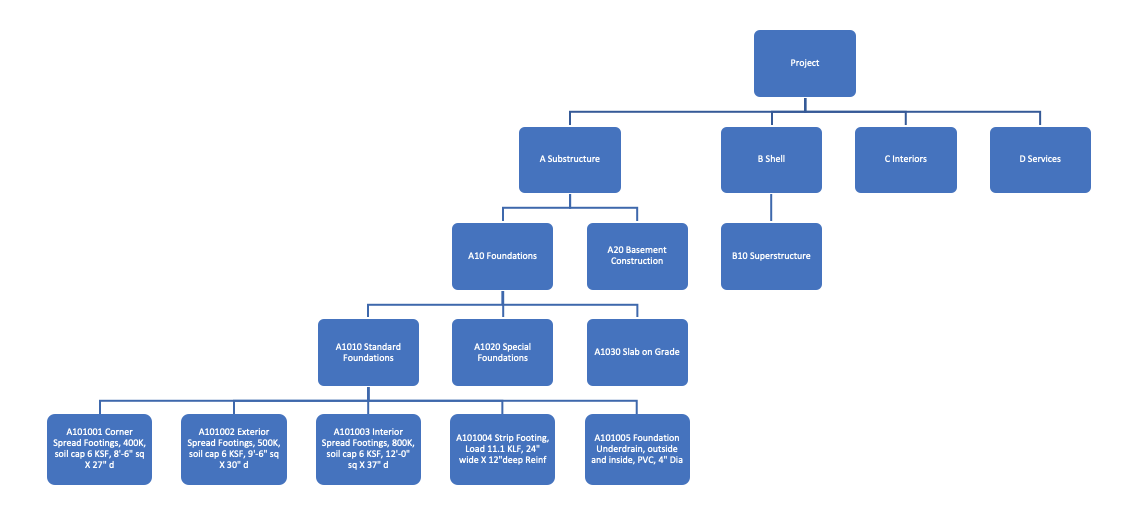
Using a Project Management Information System (PMIS) like PMWeb, converting an approved cost estimate into a budget is available as one of the default functions. In addition, the conversion is done using the CBS levels defined by each organization. This enables us to immediately address the challenging requirement of converting the approved cost estimates into budgets that can be monitored, evaluated, and reported at the required CBS levels.
Define the CBS Levels
Nevertheless, for this conversion to be done in the format that an organization requires, first there is a need to define the CBS levels needed to establish the required control level. PMWeb cost account module allows defining up to 16 CBS levels, each 10 digits long. For each CBS item, PMWeb allows assigning the cost account number of the accounting or financial application associated with the CBS item. This is a key if PMWeb integrates with the accounting or financial application used by the organization’s head office.
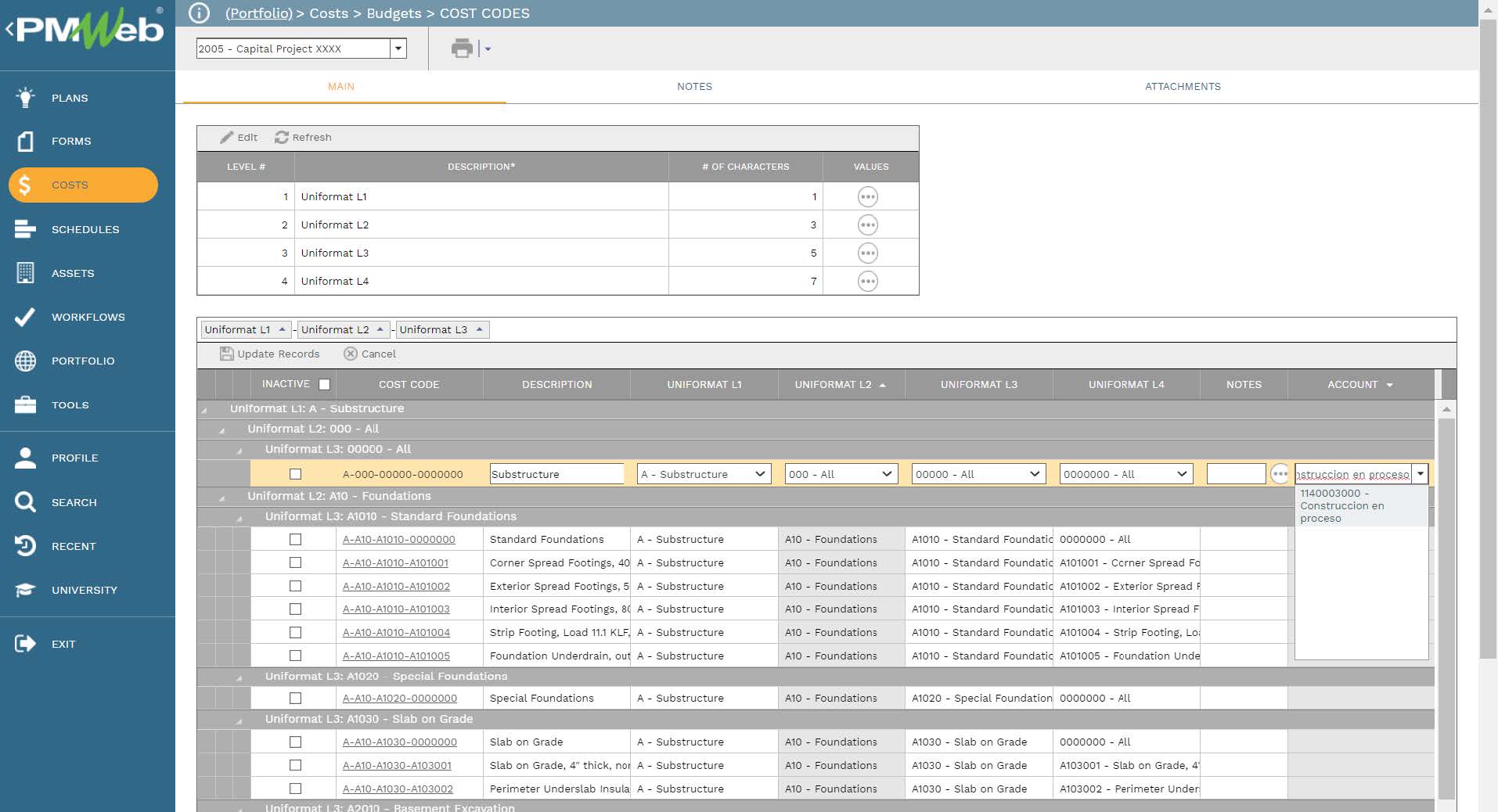
Centralize Cost Data
Another recommended practice is to create a centralized cost data of all cost items that are used in developing the cost estimate. Those cost items are common to PMWeb as well as the cost estimating tool or MS Excel used by an organization in developing their cost estimate. By standardizing the cost items database, the organization can define the CBS item associated with each cost estimate item. In addition, this standardization enables PMWeb to capture the purchase history of those cost items if they were part of a commitment contract. This is needed for material and equipment purchases.
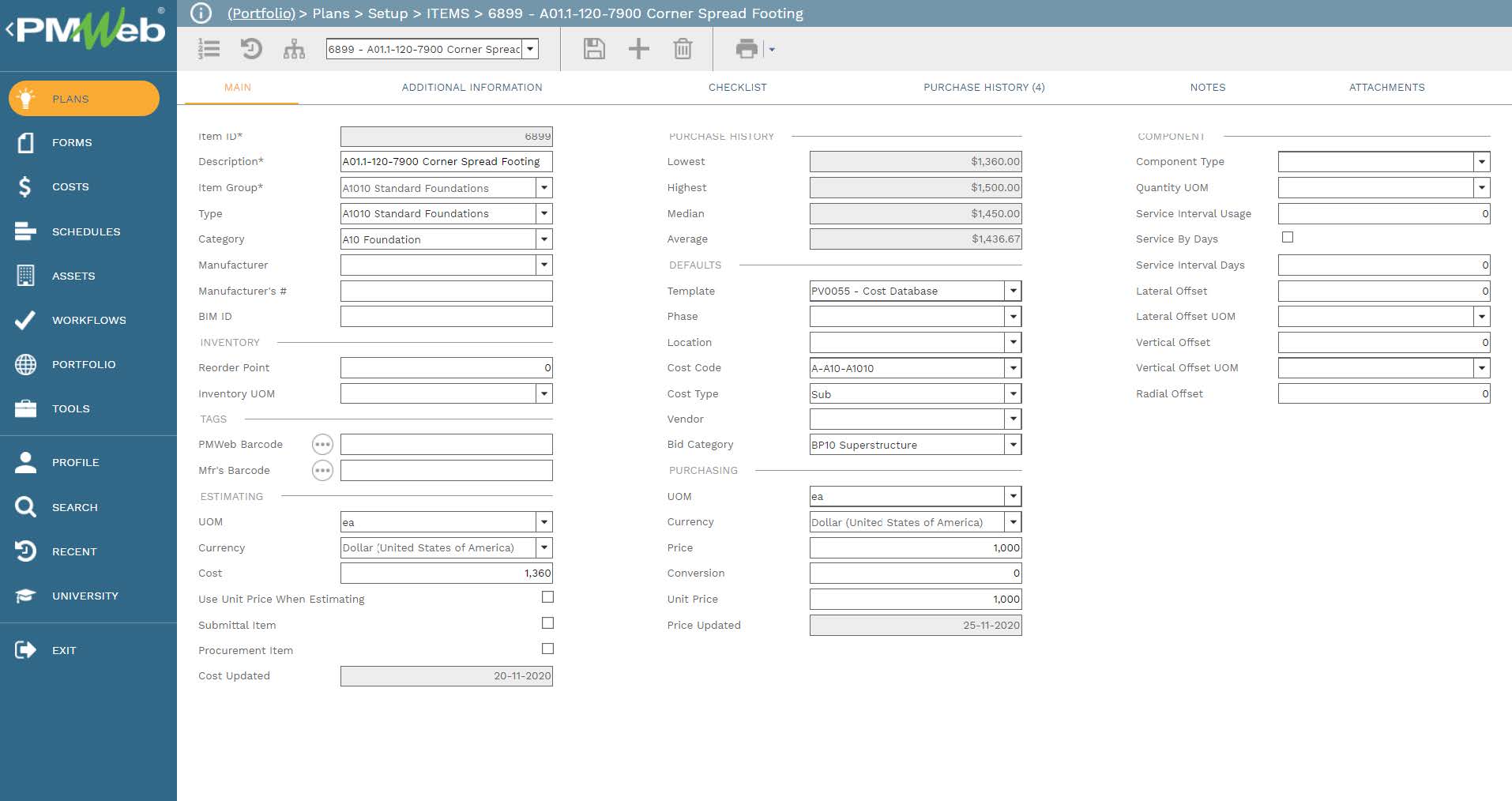
Align the Cost Estimate with the Project Schedule
A third requirement that could be needed is if the cost estimate will be aligned with the project schedule. This adds the need to associate each cost item with the relevant project schedule activity. The project schedule could be created in Primavera P6, MS Project, or the PMWeb scheduling module. If the schedule was created in Primavera P6 or MS Project, then there is a need to import the schedule to PMWeb using the default function, Link Schedule.
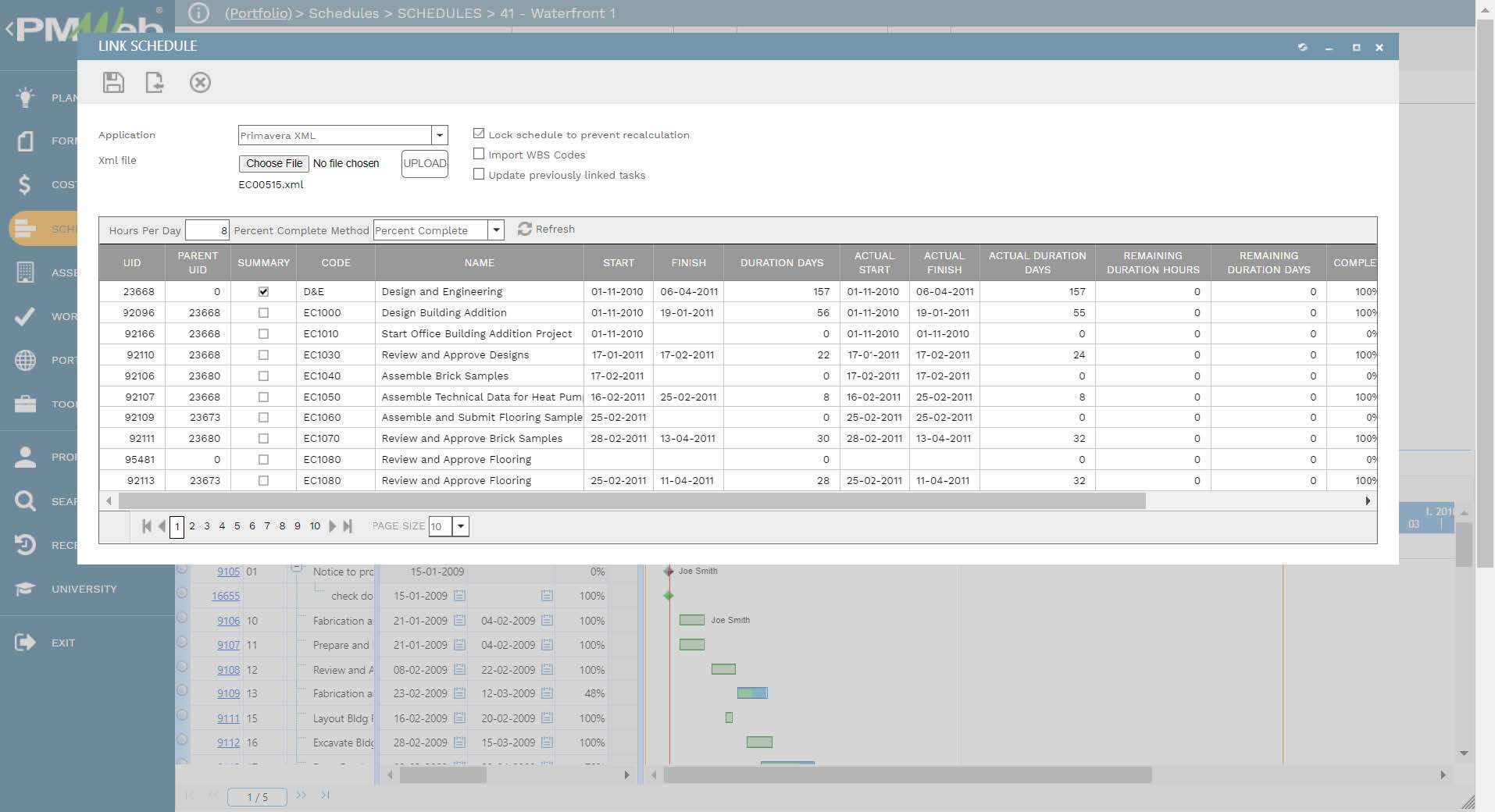
Whether the project cost estimate was created using the PMWeb cost estimate module or imported from any third-party cost estimating system or tool for which it saves in an MS Excel file format, PMWeb becomes the only repository to capture all cost estimate revisions for all capital construction projects that an organization has. When those cost estimates are approved, they become the basis to automatically generate the project budget thus addressing the great challenge of converting a cost estimate into a budget. In addition, PMWeb also allows generating budget adjustment, procurement bid packages, and commitment contracts from the approved cost estimates. This ensures that they all have the same cost estimate data source.
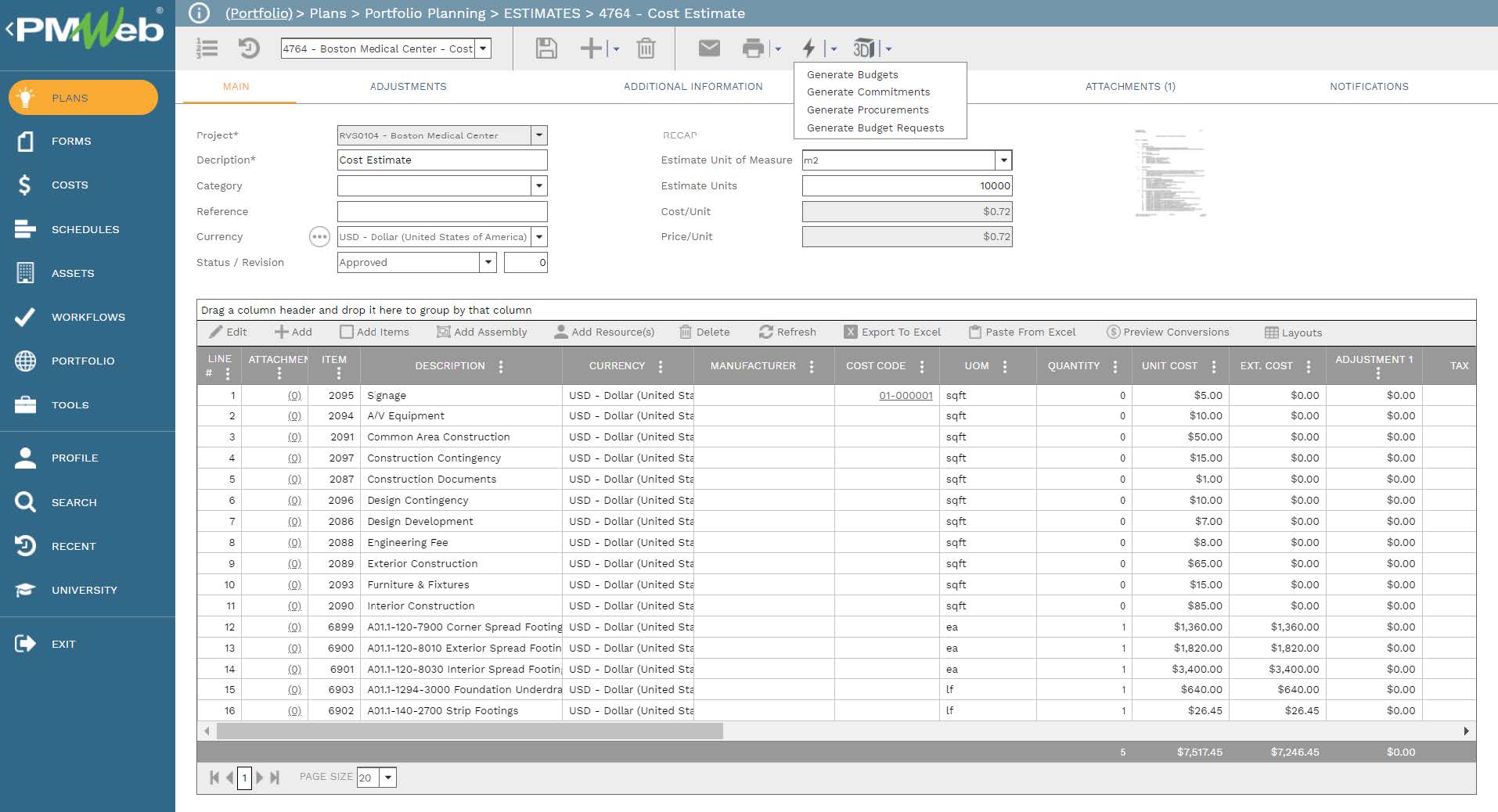
The Budget
PMWeb budget module captures the budget converted from the approved cost estimate. The budget summarizes the cost details of the cost breakdown structure (CBS) items that were associated with the cost items in the estimate. This enables the creation of the budget spending projection curves which can be either created manually or by defining the start and finish dates of each budget line item and selecting the spending plan curve. Another option would be to create the budget spending plan using the assigned project schedule activity along with the selected spending plan curve. In case there is a requirement to associate the project budget with the funding sources that are authorized for the project, this is also possible to be done for each budget line item. Of course, the funding sources and authorized funding get captured in their relevant modules in PMWeb.

Budget Adjustments
After approving the baseline budget, all adjustments to the budget are managed using the PMWeb budget request module. This module helps manage all additions, omissions, and transfers that be applied for the approved baseline budget. For transfers, there is also the option to allow transfers between different projects.
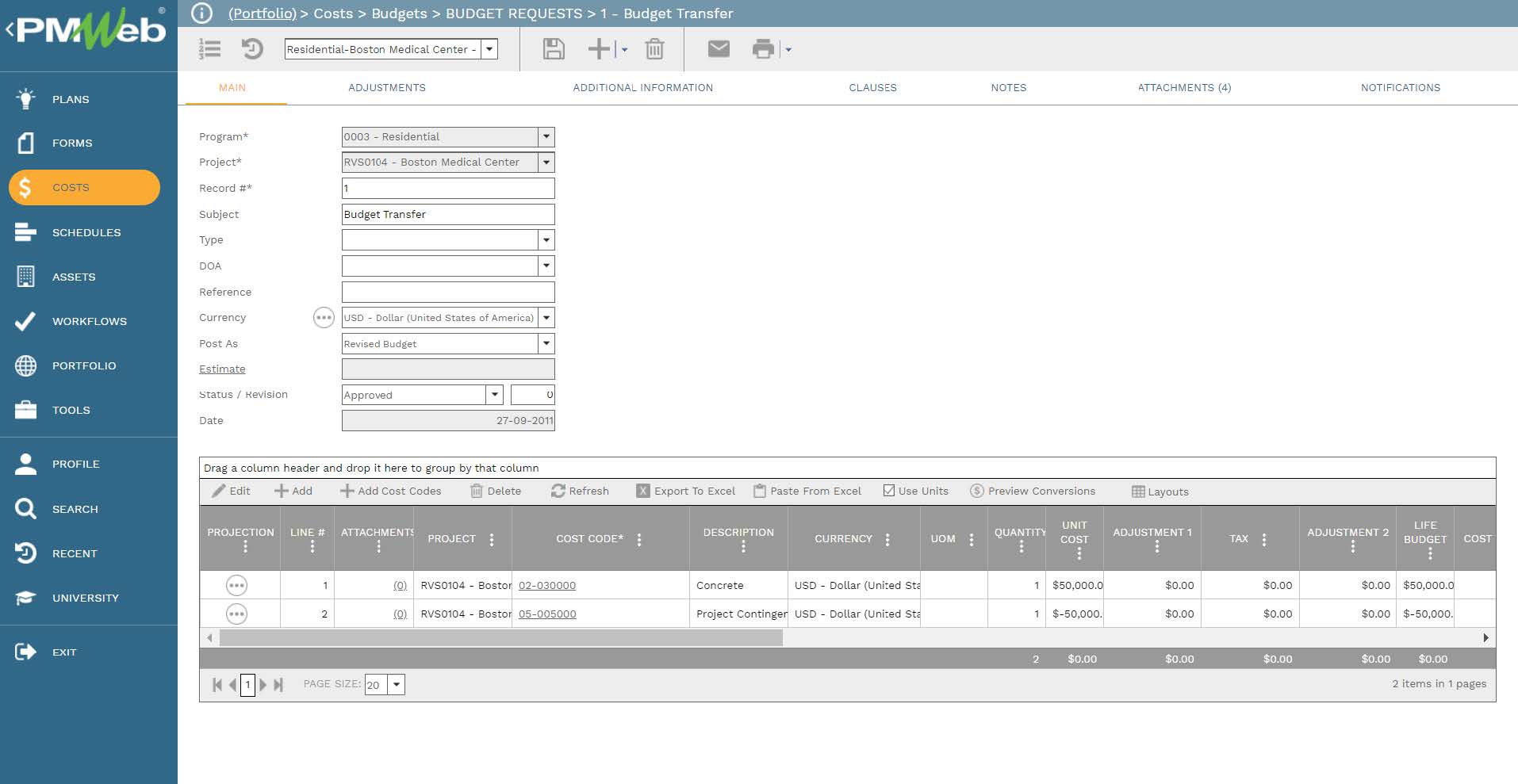
Supportive Documents
Similar to all other business processes managed in PMWeb, supportive documents that are usually associated or required for each cost estimate, cost items, budget, and budget requests business processes’ transaction can be attached to their relevant templates. It is highly recommended to add details to each attached document to better explain to the reader what is being attached and viewed. In addition, links to other relevant records of other business processes managed in PMWeb can be also linked to the records of those change orders-related business processes.

It is highly recommended that all those supportive documents, regardless of their type or source, get uploaded and stored on the PMWeb document management repository. PMWeb allows creating folders and subfolders to match the physical filing structure used to store hard copies of those documents. Permission rights can be set to those folders to restrict access to only those users who have access to do so. In addition, PMWeb users can subscribe to each folder so they can be notified when new documents are uploaded or downloaded.
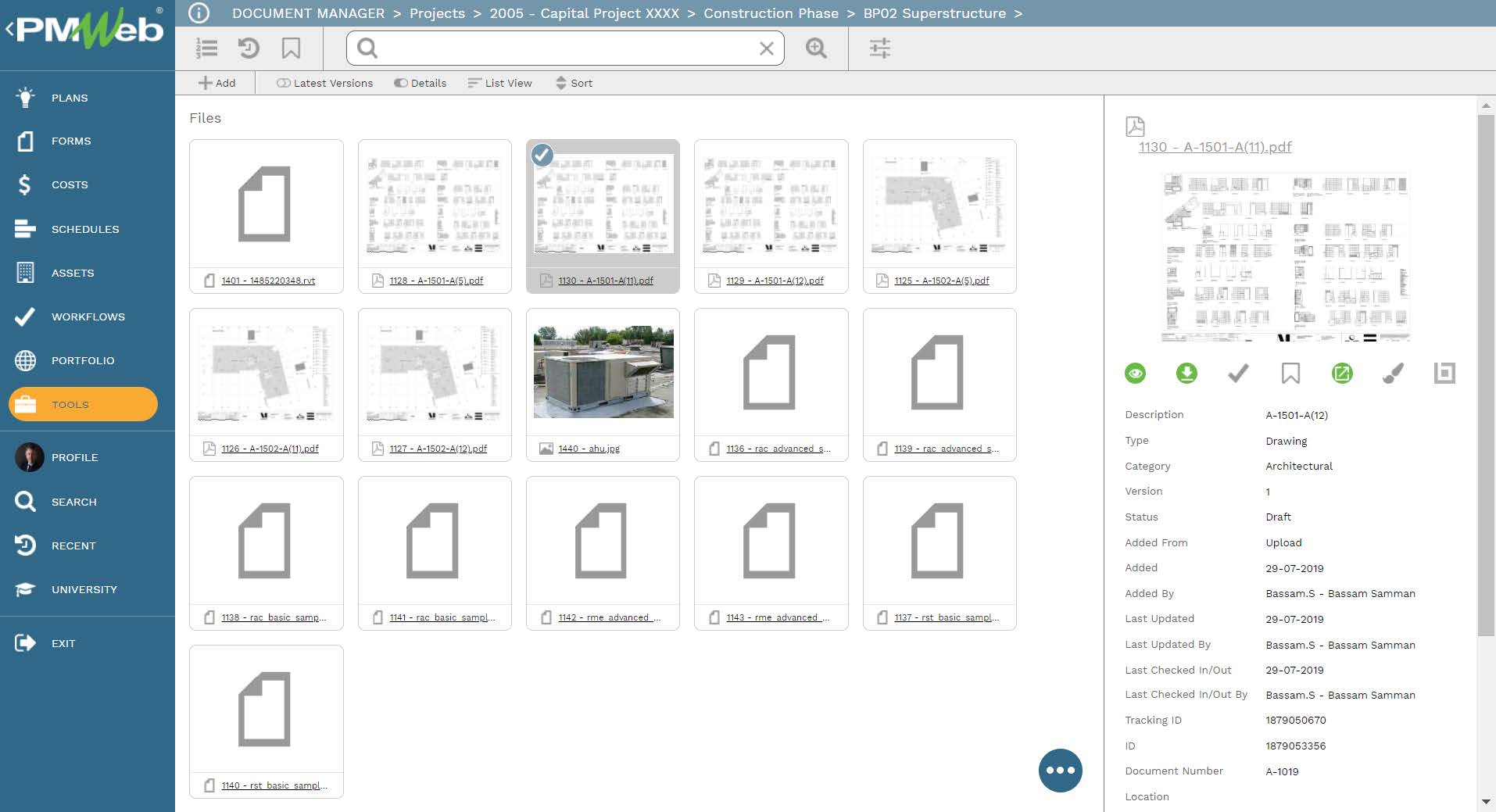
Cost Estimate, Budget, and Budget Request Workflow
To ensure that the submit, review, and approve dates of each cost estimate, budget, and budget requests business processes’ transaction submission is captured, assign a workflow to each one of those business processes. The assigned workflow maps the submit, review and approve tasks, role or roles assigned to each task, task duration, task type, and actions available for the task. In addition, the workflow could be designed to include conditions to enforce the approval authority levels as defined in the Delegation of Authority (DoA) matrix.
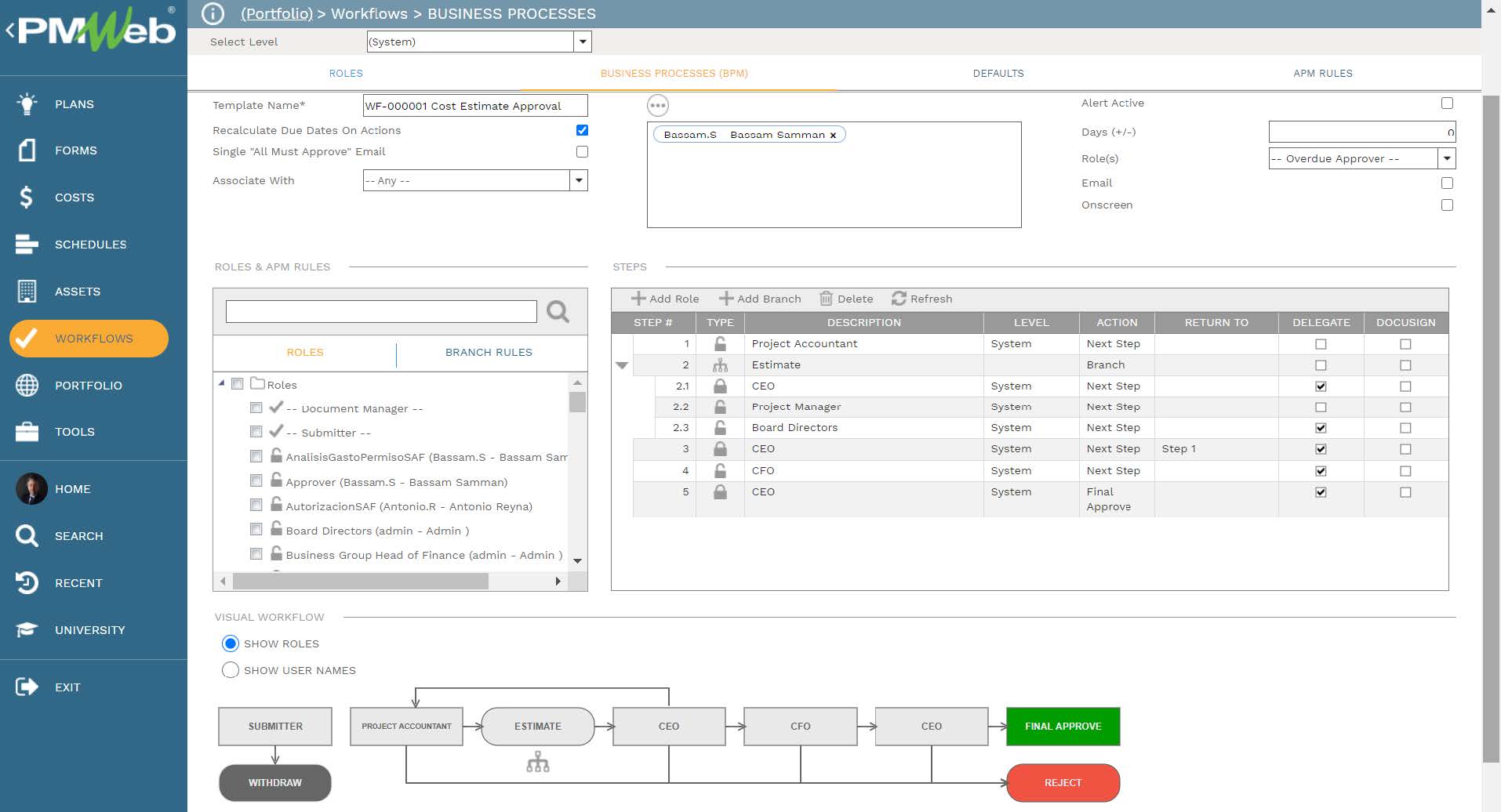
When any of the cost estimate, budget, and budget requests business processes’ transaction is initiated, the workflow tab available on the relevant template captures the planned review and approve workflow tasks for each transaction as well as the actual history of those reviews and approval tasks. The captured workflow data includes the actual action data and time, done by who, action taken, comments made, and whether team input was requested.

Similar to all other business processes managed in PMWeb, the information captured in the cost estimate, cost items, cost breakdown structures, budget, and budget requests business processes can be reported on in any desired form or format. For example, one of the ready out-of-the-box reports is the Anticipated Budget Per Month report. The report details the budget line items which are grouped by the defined cost breakdown structure (CBS) levels. The report displays the total budget amount and the planned budget spending for each project period. Usually, the report displays the information for each fiscal year. The report also includes a histogram that summarizes the planned budget spending for each project period.
